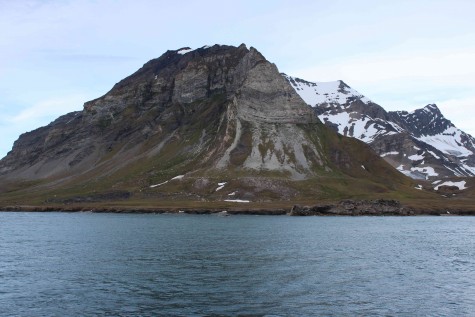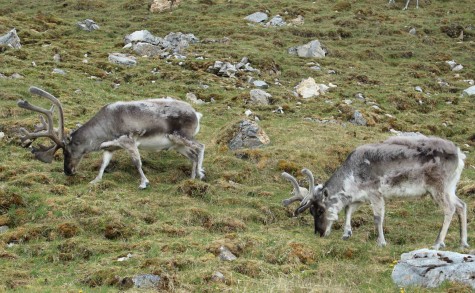Day Three
July 24, 2015
After waking up from our first night of comfortable sleep and having an absolutely luxurious breakfast in the morning, we headed to the overly comfortable theater for a mandatory briefing of proper zodiac protocols and plans for our first landing.
Hearing the descriptions of the locations we were going to that day and the passion in the staff members’ voices made our excitement uncontrollable. We immediately rushed to our rooms to get dressed for the infamous 8 degree Celsius weather. Although some of us wore four layers and some of us just one, we were all unified in wanting to finally put our feet on the Arctic ground for the first time.
Step one, step two and in the zodiac we were.
Riding in the zodiac for the first time was nothing but refreshing. There is nothing like feeling the cool breeze hit your face, hearing the zodiac cut through the deep Arctic waters or seeing the clear blue water ruffle as the motor of the zodiacs powered through.
As the zodiac washed up onto the shore, our expedition leaders reminded us of our perimeter and how long we would be allowed to stay.
Our first landing was nothing like what you would expect the Arctic to be. Naturally, you would assume that the Arctic to be filled with icy plateaus but Isfjorden was actually filled with luscious green hills that had a variety of flora, fauna and loads of reindeer poop on the permafrost – which was perfect for our research projects. However, we didn’t bring any equipment out onto the field yet since it was just our first landing and we wanted to understand what a landing was like first.
Our first steps on Isfjorden were similar to a little kid’s steps at Disneyland for the very first time. We all ran across the area touching each point of the perimeter and taking dozens and dozens of photos. We were not even afraid to go up very close and personal to the animals. In fact, we got just 5 feet away from reindeer and got pecked on our heads by the vicious Arctic skuas who did not appreciate us encroaching on their nesting sites.
We were up for anything. We ran up and down hills multiple times in our bulky parkas and unwieldy boots. Two of us even did the famous whip and nae-nae on the cliff of the landing site. (I think it’s safe to say that we were the very first ones to ever do that in the Arctic – how cool is that?)
After that eventful first landing, we were back on the ship for a yet again luxurious lunch buffet that was followed by an expedition recap led by the expedition team (a tradition that will be carried along the trip). There they not only reminded us of the prior trip but also what we could expect at our next stop, Poolypenten or home of the walruses.
This would be the first landing where we would be allowed to take our science equipment onto the field. But since the landing was a beach landing, we were not able to find too much that we would be useful for our specific projects.
After washing up on shore on our zodiacs, we followed a trail of red flags that would take us to a location full of the 3,000 pound brown skinned animals – walruses. Dozens of them were piled up, cuddling with each other while dozen more humans clad in red parkas watched them in utter silence. All that could be heard was the rather frequent clicking of cameras.
It was quite shocking to be so up close to these animals. They didn’t really bother at all that we were around. It’s one of thing to see them in your local zoo, but to see them up close in their own habitat is absolutely amazing.
After an hour of watching them sleep, fight, and play, we were back on to the zodiacs and on to the ship.
It had just been 10 hours since we started our Arctic expedition, but we felt like it had been a week. We had done so much, seen so much, and more importantly walked so much. We were off for a good night’s sleep but unlike America, in complete sunshine.


